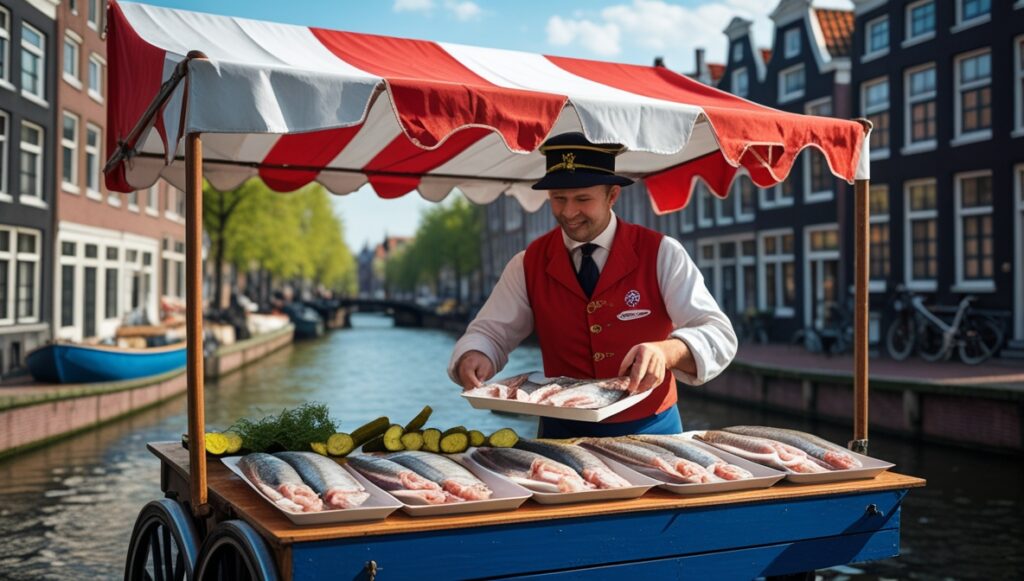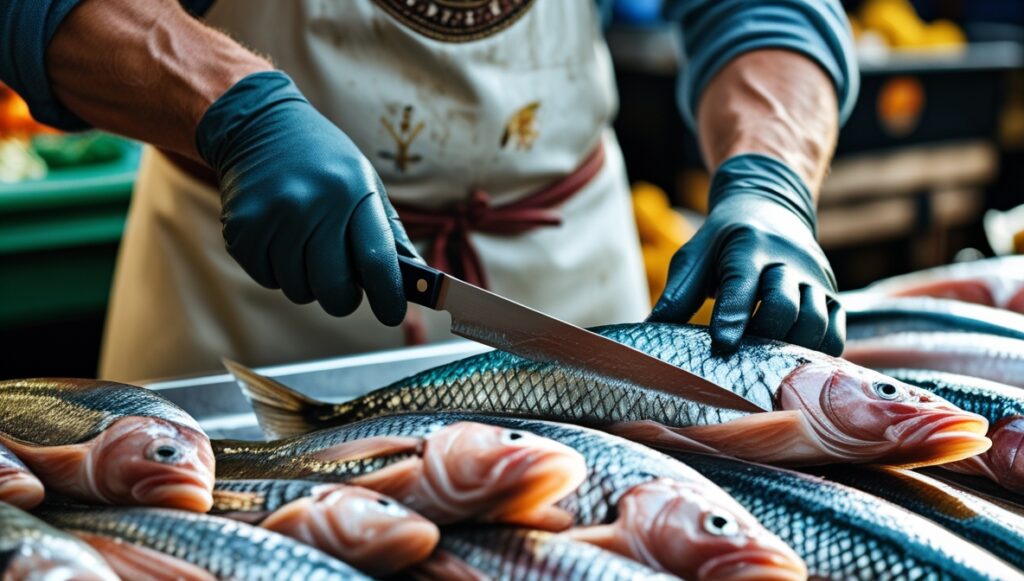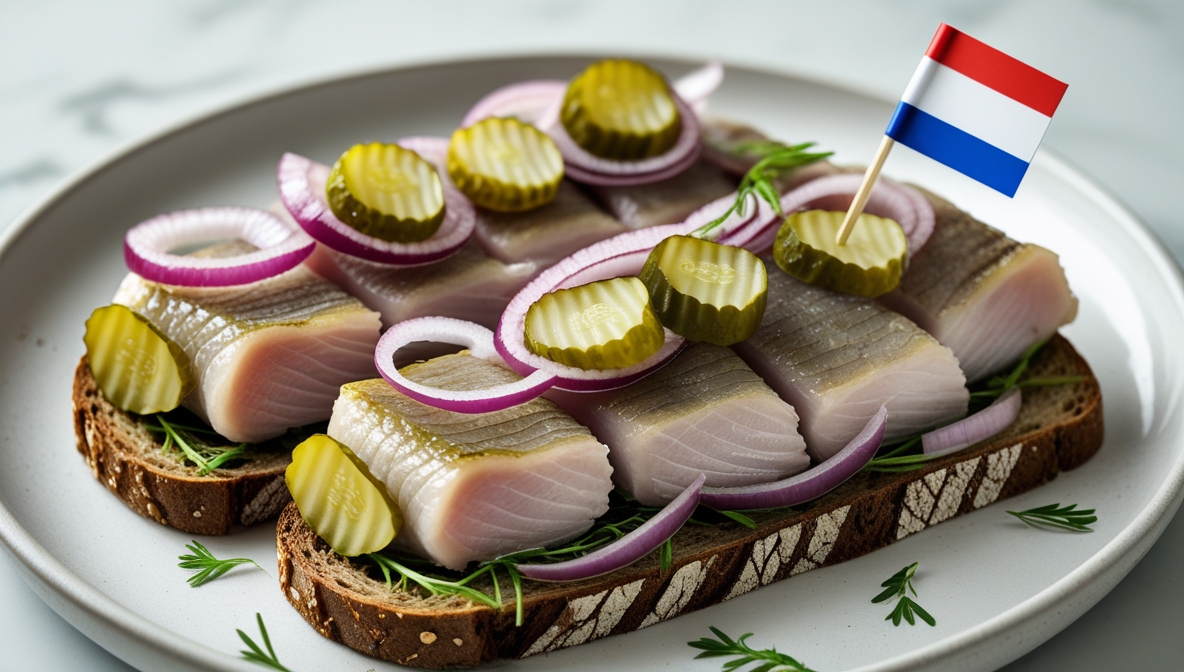Introduction
Haring, or Dutch raw herring, is more than just a seafood snack in the Netherlands—it’s a national treasure. Traditionally served with chopped onions and pickles, this delicacy is as beloved by locals as it is intriguing to travelers. What makes it unique is the way it’s eaten: whole, held by the tail, and lowered into the mouth in one go. Whether you’re strolling through Amsterdam or attending a food festival in Rotterdam, the sight of locals enjoying haring is a testament to its cultural significance and enduring popularity.


Cooking Process & Difficulty Level
History & Cultural Significance
Haring dates back to the Middle Ages, with its roots entwined in Dutch maritime history. The innovation of “gibbing” (removing gills and part of the gullet) by a Dutch fisherman in the 14th century allowed herring to be preserved longer, boosting trade and nutrition for sailors. Herring became so integral that it was once considered a pillar of the Dutch economy. Today, “Vlaggetjesdag” or “Flag Day” marks the arrival of the first catch of Hollandse Nieuwe (new herring) in June, celebrated with parades, costumes, and of course, tastings.
Ingredients & Regional Variations
Key Ingredients:
Raw herring (Hollandse Nieuwe)
Chopped raw onions
Pickles
Optional bread roll (broodje haring)
Regional Variations:
In Amsterdam, it’s common to serve it with a bread roll.
In the north, the focus remains on the pure fish without bread.
Some places add sweet pickled gherkins or mustard sauce.
Modern Adaptations:
Served in sushi-style dishes in fusion restaurants.
Paired with avocado and microgreens for a modern twist.

Though often served raw, preparation is key to its unique flavor.
Difficulty: Beginner-friendly (no cooking required).
Step-by-Step Guide:
Clean and gut the herring using traditional gibbing method.
Salt and age it in a controlled environment for at least 5 days.
Rinse and debone before serving.
Serve with chopped onions and pickles.
Optional: serve in a bun as broodje haring.
Where to Eat Haring in the Netherlands
Frens Haringhandel (Amsterdam) – Iconic stall near the Bloemenmarkt.
Stubbe’s Haring (The Hague) – Family-run business famous for fresh haring.
Vishandel Molenaar (Rotterdam) – Highly praised by locals.
Vlaggetjesdag (Scheveningen) – Annual festival for the first catch.
Foodhallen (Amsterdam) – Contemporary setting offering traditional flavors.
Pairing with Drinks & Side Dishes
Drinks:
Dutch gin (Jenever)
Light beer or pilsner
Dry white wine or sparkling wine
Side Dishes:
Crusty bread
Boiled potatoes with herbs
Light salads (cucumber or beetroot based)
Fun Facts & Lesser-Known Trivia
The Dutch consume over 70 million herring annually.
The term “Hollandse Nieuwe” is protected by EU regulation.
King Willem-Alexander has been spotted enjoying haring.
The tradition of eating it by the tail is unique and photo-worthy!
Health Benefits & Nutrition
Nutritional Highlights:
High in Omega-3 fatty acids
Rich in protein and vitamin D
Low in carbohydrates
Dietary Adaptations:
Gluten-free (when served without bread)
Keto-friendly
Not vegan (obviously) but pescatarian-friendly
How to Cook It at Home (Best Haring Recipe)
Ingredients:
2 Hollandse Nieuwe herring fillets
1 small onion (chopped)
Pickles (sliced)
Bread rolls (optional)
Steps:
Rinse the herring fillets in cold water.
Pat dry and place on a plate.
Sprinkle chopped onions generously on top.
Serve with pickles on the side.
Optionally, place in a soft bread roll for a broodje haring.
Tips:
Chill the fish well before serving.
Pair with a cold shot of jenever for authenticity.
Global Influence & Fusion Cuisine
While largely rooted in Dutch culture, herring has influenced:
Scandinavian dishes (e.g., gravlax or pickled herring)
Japanese fusion dishes using sashimi-style cuts
Gourmet restaurants globally experimenting with cured fish
Comparison with Similar Dishes
Haring vs. Gravlax (Sweden): Both are cured, but gravlax is cured with sugar, salt, and dill.
Haring vs. Pickled Herring (Eastern Europe): Pickled versions are tangier and stored in vinegar.
Haring vs. Sashimi (Japan): Both are raw, but sashimi uses various fish and no aging or salt cure.

